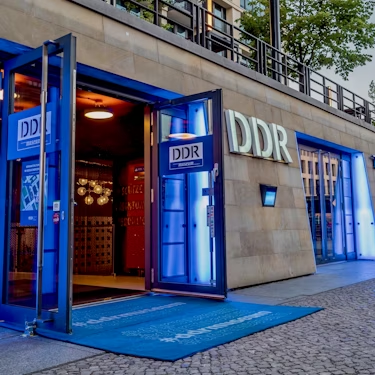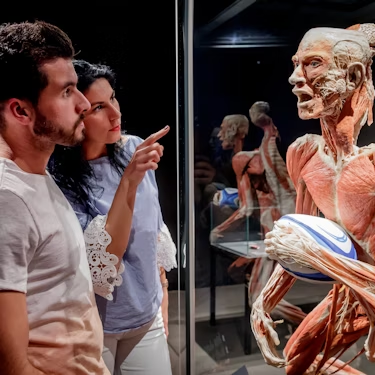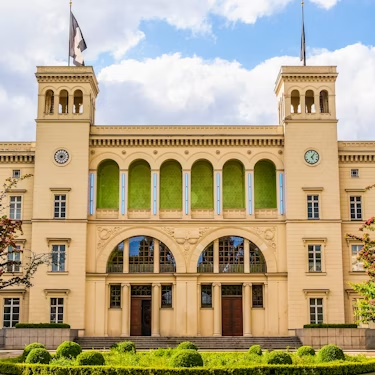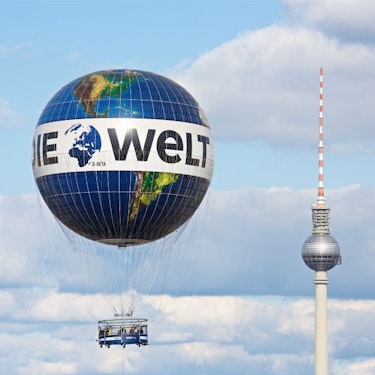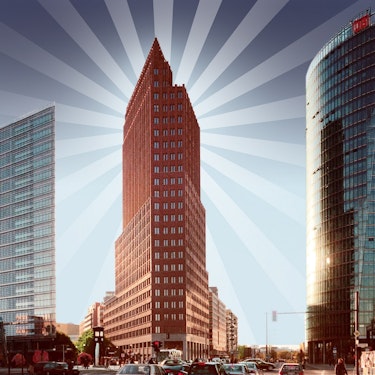More about: 10 Best Museums in Berlin
When planning a trip to Berlin you'll find a city full of activities and impressive places; art galleries, cultural spaces and historical museums are an essential part of the city. Here's my favourite list of museums, so while you wander through the Jewish quarter, stroll through the Turkish quarter or take a cruise on the waters of the Spree, take a look at the exhibition spaces that catch your eye.
1. Berlin's New Museum

Established in 1855, the New Berlin Museum is located on Museum Island itself and is another must-see gem on any visit to Berlin. In addition to the fantastic collection of ancient Egyptian art, you'll find artefacts from many other civilisations. Pay attention to the building's own architecture in neoclassical and renaissance style.
What you will find in this museum
You should visit the New Berlin Museum (or Neues Museum) for the wonderful collection of ancient Egyptian art and the impressive collection of Papyri you will find here. Possibly the most famous work in the collection is the marvellous Bust of Nefertiti made of limestone and plaster and discovered in 1912, which depicts the perfect features of the ancient Egyptian queen.
Details of interest
- How to get there: Located at Genthiner Straße, 38; the nearest metro station is Friedrichstraße, line 6.
- Hours: 10am-6pm daily; extended hours on Thursdays until 8pm.
- Admission fee: An adult ticket costs around €12.
2. DDR Museum

The DDR Museum, one of the smallest and most curious exhibition spaces you will find in Berlin, is a museum dedicated to the former German Democratic Republic where objects of everyday life as well as the imposed lifestyle of the Germans who lived under the communist regime are on display. If you are interested in the most recent history and politics of this country, from 1949 to 1990, you should not miss this visit.
What you will find in this museum
All kinds of objects and curiosities ranging from medicines, reconstructions of living spaces, cars from the period and explanations of how the communist regime handled aspects such as advertising. The best part of the museum is the collection of clothing from the period.
Interesting details
- How to get there: The museum is located at Karl-Liebknecht-Straße, 1. You can get there using the Berlin intercity train or the city bus.
- Opening hours: The exhibition is open daily from 10am to 8pm.
- Admission fee: An adult ticket costs approximately €10.
3. Checkpoint Charlie Wall Museum
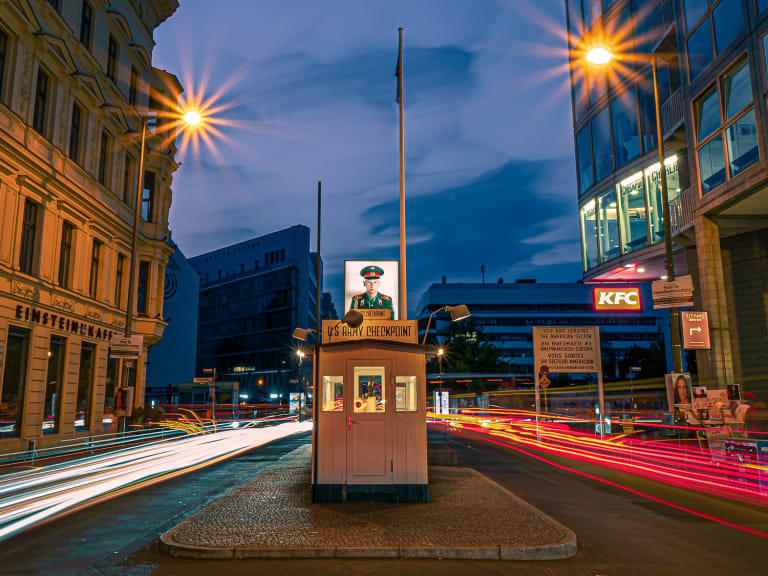
Known as the Wall Museum, this is one of those peculiar spaces that you can only find in Berlin. A museum dedicated to the Berlin Wall but mainly to the most important of the border crossings that united East and West Berlin. It began as a small collection of everyday objects, but later a wide selection was compiled until it became what it is today.
What you will find in this museum
The exhibition is divided into exhibits, which in turn are made up of photos and documents recounting historical events and the most unusual successful escape attempts recorded over the years. Although the museum is very interesting, it can appear to be somewhat cluttered, so it is best to visit when there are not too many tourists.
Interesting details
- How to get there: Located at Friedrichstraße, 43; Kochstraße is the nearest metro station.
- Opening hours: The exhibition is open to the public daily from 9am to 10pm.
- Entry fee: An adult ticket costs around €15.
4. Hamburger Bahnhof Museum

The former Hamburg Railway Station, built in 1847 in neoclassical style, was converted into a museum in 1996. Hamburger Bahnhof is located in the centre of Berlin and is a must for all lovers of contemporary art. In addition to paintings, drawings and silkscreen prints are exhibited.
What you will find in this museum
A space designed mainly for contemporary art lovers, the museum has a section dedicated to the works of the artist Andy Warhol, a prominent artist of the Pop Art movement who gained great popularity in the 1960s.
Interesting details
- How to get there: The building is located at Invalidenstraße, 50-51; the easiest way to get there is to use the city's underground. The nearest stop is Zinnowitzer Straße.
- Opening hours: Tuesday to Friday the museum is open to the public from 10am to 6pm; Saturdays and Sundays from 11am to 6pm and Saturdays and Sundays from 11am to 6pm.
- Admission fee: The entrance ticket costs approximately €14 per person.
5. Berggruen Museum

Also known as the Berggruen Collection, this important museum is part of the Berlin National Gallery and houses one of the most important private collections of modern art in the world with cubist, surrealist and postmodernist paintings.
What you will find in this museum
The largest and most interesting collection of modern art in Berlin. However, the most interesting part of the museum is the part that presents the life, work and evolution of Pablo Picasso, with a collection of more than 100 works from his beginnings in 1897 until his death in 1972. In addition to Picasso's collection you will find paintings by Henri Matisse, Paul Klee and other talents of the time.
Interesting details
- How to get there: Schloßstraße, 1; if you take the Berlin underground you will find two stations nearby, Richard-Wagner-Platz on line 7 and Sophie-Charlotte-Platz on line 2.
- Opening hours: Mondays the museum is closed; Tuesday to Friday from 10am to 6pm; weekends from 11am to 6pm.
- Admission fee: Admission tickets for adults are available from €10.
6. Jewish Museum Berlin.

The largest Jewish Museum in Europe is located in Berlin with art installations and everyday objects allegorical to the Jews in Germany. The current structure was inaugurated in 2001 and designed by the talented architect Daniel Libeskind; it is one of the most outstanding works of the deconstructivist style, so it is worth a visit to admire its beautiful and modern façade.
What you'll find in this museum
The Jewish Museum in Berlin is a place where you can learn about the history of the Jewish people in Germany, from the Middle Ages to the present century. You will find all the history and culture of this people documented through different collections, making it a real treat for history lovers.
Interesting details
- How to get there: Located in Kreuzberg, the nearest underground station is Kochstraße, 10 minutes away.
- Opening hours: Open to the public daily from 10am to 7pm.
- Admission fee: Access to the permanent exhibition is free. If you want to visit one of the temporary collections you will have to pay a ticket of approximately €8.
7. German Museum of Technology

The former Anhalter Bahnhof railway station was destroyed during World War II and rebuilt in 1982 to house an extensive collection of technology mainly from the last century, giving birth to the German Museum of Technology.
The museum's collection includes an extensive railway collection with various models of locomotives and steam trains; an extensive aeronautical collection with numerous models of aircraft from different eras and finally a computer collection with really old models.
What you will find in this museum
Numerous experiments and demonstrations are carried out here, most of them focused on didactic learning through play. If you're visiting Berlin with children, a trip to this museum is a must.
Interesting details
- How to get there: The museum is located at Trebbiner Straße, 9. The nearest metro stations are Möckernbrücke and Gleisdreieck.
- Opening hours: The museum is closed on Mondays, from Tuesday to Friday from 9am to 5.30pm and on weekends from 10am to 6pm.
- Admission fee: Adult tickets are available from €8.
8. Alte Nationalgalerie

The Old National Gallery of Berlin is a beautiful neoclassical building with the appearance of a Roman temple built in 1876. Steeped in history and art, it is considered the birthplace of some of the most important and influential art movements of recent periods. It is an essential visit for lovers of the plastic arts.
What you will find in this museum
It is the ideal place to admire the paintings of Adolph Menzel. Some of the must-see areas on a visit to the Berlin National Gallery include the atrium adorned with statues, where works by German Roman painters and talented exponents of French Impressionism are on display.
Interesting details
- How to get there: The museum is located at Bodestraße 1-3; the nearest stop is Friedrichstraße on the Berlin underground.
- Opening hours: Closed on Mondays, the museum is open to the public from Tuesday to Sunday from 10am to 6pm.
- Admission fee: From €10 for an adult ticket.
9. Bode Museum

The Bode Museum was originally built between 1898 and 1904 under the rule of Emperor Wilhelm II; bombing during World War II seriously affected the building, which was completely renovated in the original neo-baroque style imposed by its creator.
An impressive museum of sculptural art, it is located on Museum Island on the banks of the Spree.
What you will find in this museum
The world's largest and most impressive collection of sculptures is on display in the rooms of the Bode Museum. The fabulous creations range from medieval times to the end of the 18th century, including historical treasures from the Byzantine era.
Interesting details
- How to get there: Located at Bodestraße, 1; the nearest metro station is Friedrichstraße, line 6.
- Opening hours: The museum is closed on Mondays, from Tuesday to Sunday it is open to the public from 10am to 6pm; on Saturdays extended opening hours until 8pm.
- Admission fee: From €10 for an adult ticket.
10. Pergamon Museum

Considered one of Berlin' s must-see museums, the famous Pergamon Museum is located on what is known as the Museum Island, a complex that includes some of the capital's most important cultural hotspots. It was built in 1910 with the intention of housing works of classical art ranging from Eastern Islamic to Greek antiquities, making it the most visited museum in the city, but be warned: this museum is currently closed for renovation, so you'll have to wait for it to reopen before you can visit it.
What you will find in this museum
When we talk about the Pergamon Museum, the jewel in the crown is undoubtedly the majestic Altar of Zeus in Pergamon, a religious monument from ancient Greece that is more than 2000 years old. Discovered by Carl Humann during excavations of the ancient acropolis of Pergamon, the imposing structure was brought in parts to Germany in 1871 and reconstructed for the public's enjoyment.
Save on museums by using the Berlin Pass
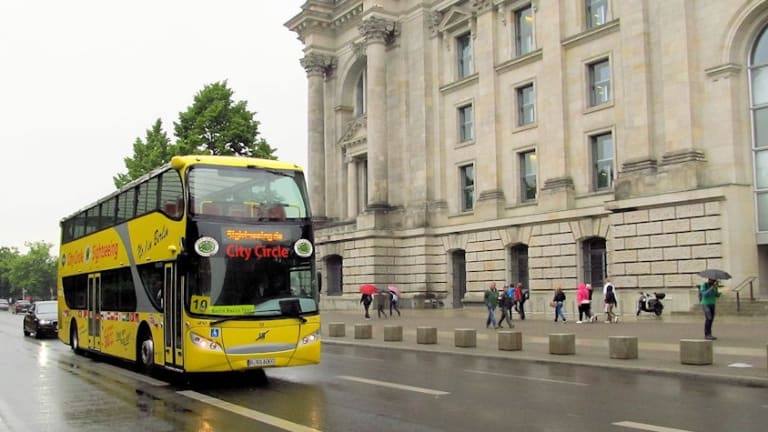
The Berlin Pass is a tool designed for the hundreds of thousands of tourists who pass through the city every year. It is a special card that allows them to experience highly touristic destinations and other activities such as the Berlin sightseeing bus. The passes, designed for two or three days, vary in time of use and are a great way to save money if you organise your itinerary to make the most of your time.
The Berlin Pass covers around 50 attractions and on Museum Island alone you can visit free of charge: the Old National Gallery, the Museum of Antiquities, the Bode Museum, the New Museum and the Pergamon Museum. The best part? No need to queue!




